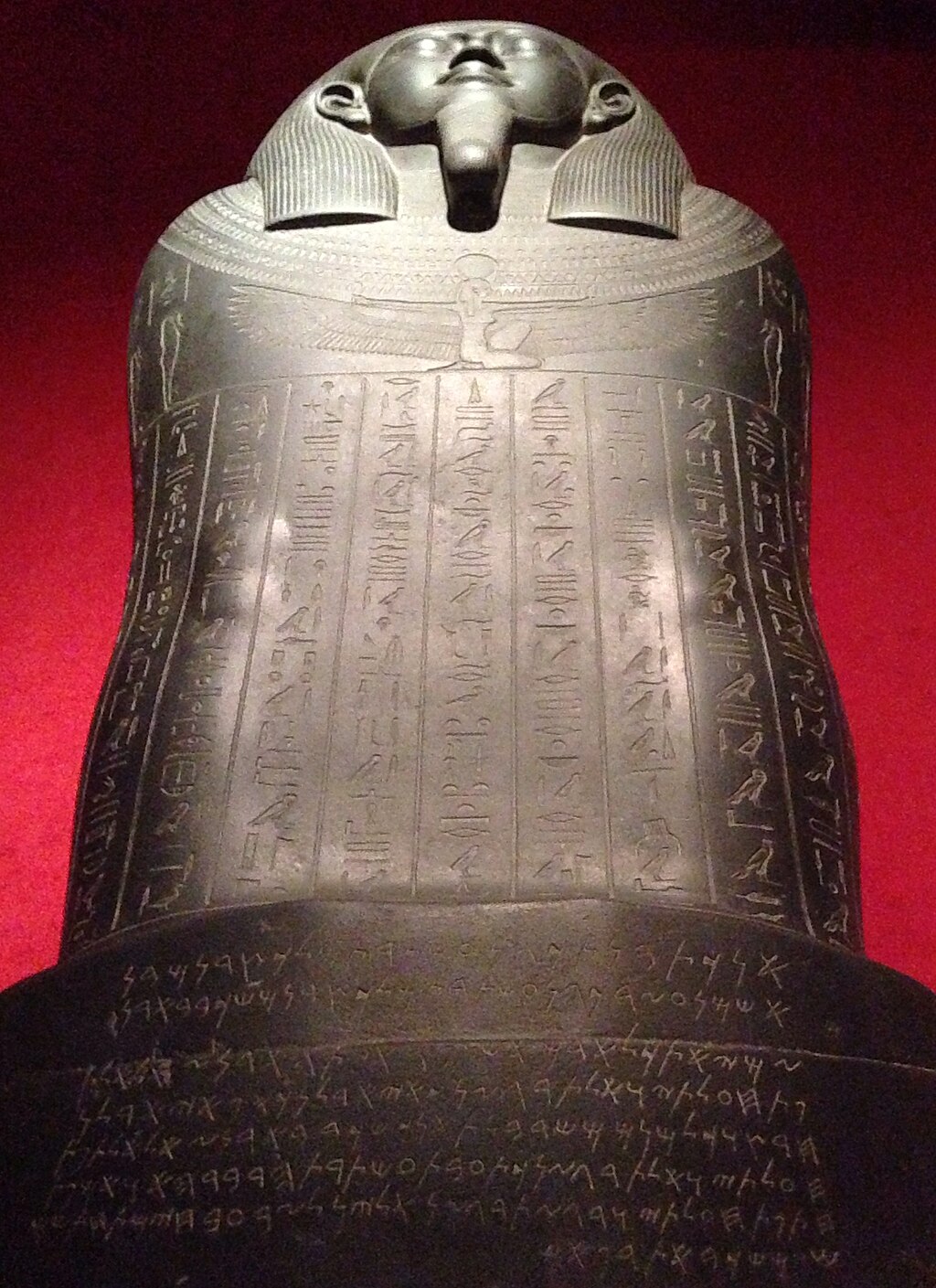
The “Tabnit Sarcophagus” was created for King Tabnit of Sidon, a Phoenician ruler. Carved in the early 5th century BC, has two separate inscriptions, one in Egyptian hieroglyphics and one in the Phoenician script. Discovered in 1887 at a Necropolis near Sidon together with the Alexander Sarcophagus and other related sarcophagi. Tabnit’s body was found floating perfectly preserved in the original embalming fluid.
The tombs were discovered in 1887, and the curator of the Istanbul Archaeological Museum arranged for full excavation and the transfer of the sarcophagi to Istanbul. During the excavation, the workmen opened the Tabnit sarcophagus and found:
“a human body floating in perfect preservation in a peculiar fluid.”
While the curator was at lunch, the workmen overturned the sarcophagus and poured the fluid out so that the secret of this mysterious liquid was lost forever.
The Curse of the Sarcophagus
The Egyptian hieroglyphic inscription on the Tabnit Sarcophagus is a curse that, reads:
“I, Tabnit, priest of Astarte (Ishtar), king of Sidon, the son of Eshmunazar, priest of Astarte, king of Sidon, am lying in this sarcophagus.
Whoever you are, any man that might find this sarcophagus,
don’t, don’t open it and don’t disturb me,
for no silver is gathered with me, no gold is gathered with me, nor anything of value whatsoever,
only I am lying in this sarcophagus.
Don’t, don’t open it and don’t disturb me,
for this thing is an abomination to Astarte.
And if you do indeed open it and do indeed disturb me,
may you not have any seed among the living under the sun,
nor a resting-place with the Rephaites (dead ancestors).”
History does not record the fate of the workmen who opened the sarcophagus. Tabnit’s now decomposed skeleton is at the Istanbul Archaeology Museums.
Sarcophagus
A sarcophagus is a box-like funeral receptacle for a corpse and was usually created to be displayed above the ground. The word sarcophagus is derived from a combination of Greek words that mean “flesh-eating stone.”
Explore Historic Sarcophagi
- Tabnit Sarcophagus
- Sarcophagus of Seianti Hanunia Tlesnasa
- Amathus Sarcophagus
- Sarcophagus Relief depicting the Labors of Hercules
- Sarcophagus Lid of Queen Sitdjehuti
- Alexander Sarcophagus
- Portonaccio Sarcophagus
Tabnit Sarcophagus
- Title: Tabnit Sarcophagus
- Year: c.500 BC
- Material: Basalt
- Writing: Phoenician
- Discovered: 1887
- Find Site: Sidon, in current day Lebanon
- Museum: Istanbul Archaeology Museum, Istanbul, Turkey
A Tour of the Istanbul Archaeology Museums
- Alexander Sarcophagus
- Tabnit Sarcophagus
- Siloam Inscription
A Tour of Middle East Museums
- Arab Republic of Egyptian Museums
- Cairo Museums
- Egyptian Museum
- Cairo Museums
- Turkey Museums
- Istanbul Museums
- İstanbul Archaeology Museums
- Topkapı Palace
- Istanbul Museums
- Iran Museums
- Tehran Museums
- Reza Abbasi Museum
- Tehran Museums
- United Arab Emirates Museums
- Dubai Museums
- Dubai Museum
- Saeed Al Maktoum House
- Sharjah Museums
- Sharjah Museum of Islamic Civilization
- Dubai Museums
- Israel Museums
- The Israel Museum, Jerusalem
~~~
“And if you do indeed open it and do indeed disturb me,
may you not have any seed among the living under the sun,
nor a resting-place with the Rephaites (dead ancestors).”
– The Curse of the Tabnit Sarcophagus
~~~
Photo Credits: 1) By oncenawhile [CC BY-SA 3.0 (http://creativecommons.org/licenses/by-sa/3.0)], via Wikimedia Commons
Popular this Week








 Sponsor your Favorite Page
Sponsor your Favorite Page SEARCH Search for: Search Follow UsJoin – The JOM Membership Program
Sponsor a Masterpiece with YOUR NAME CHOICE for $5
Share this:
- Tweet
